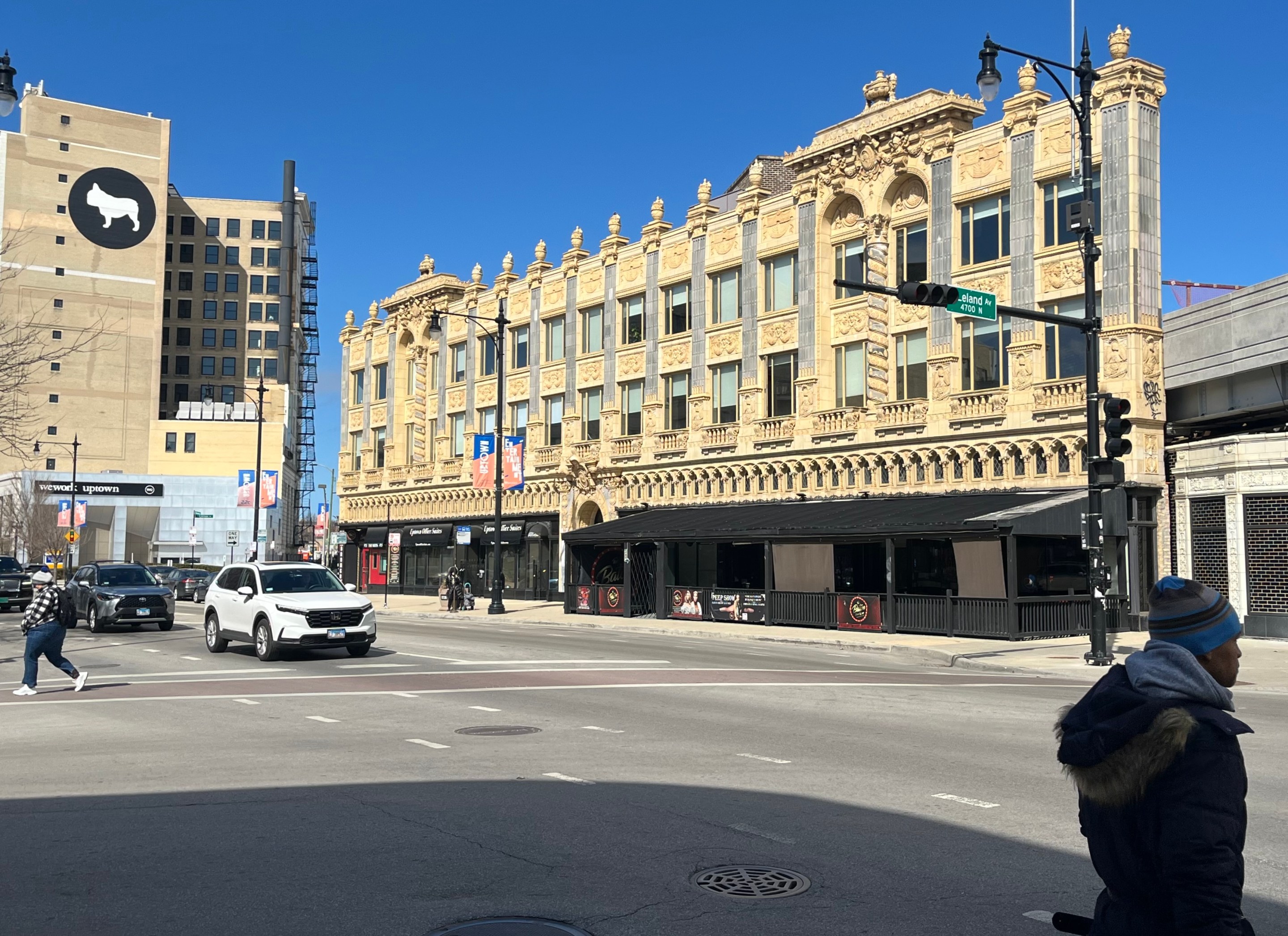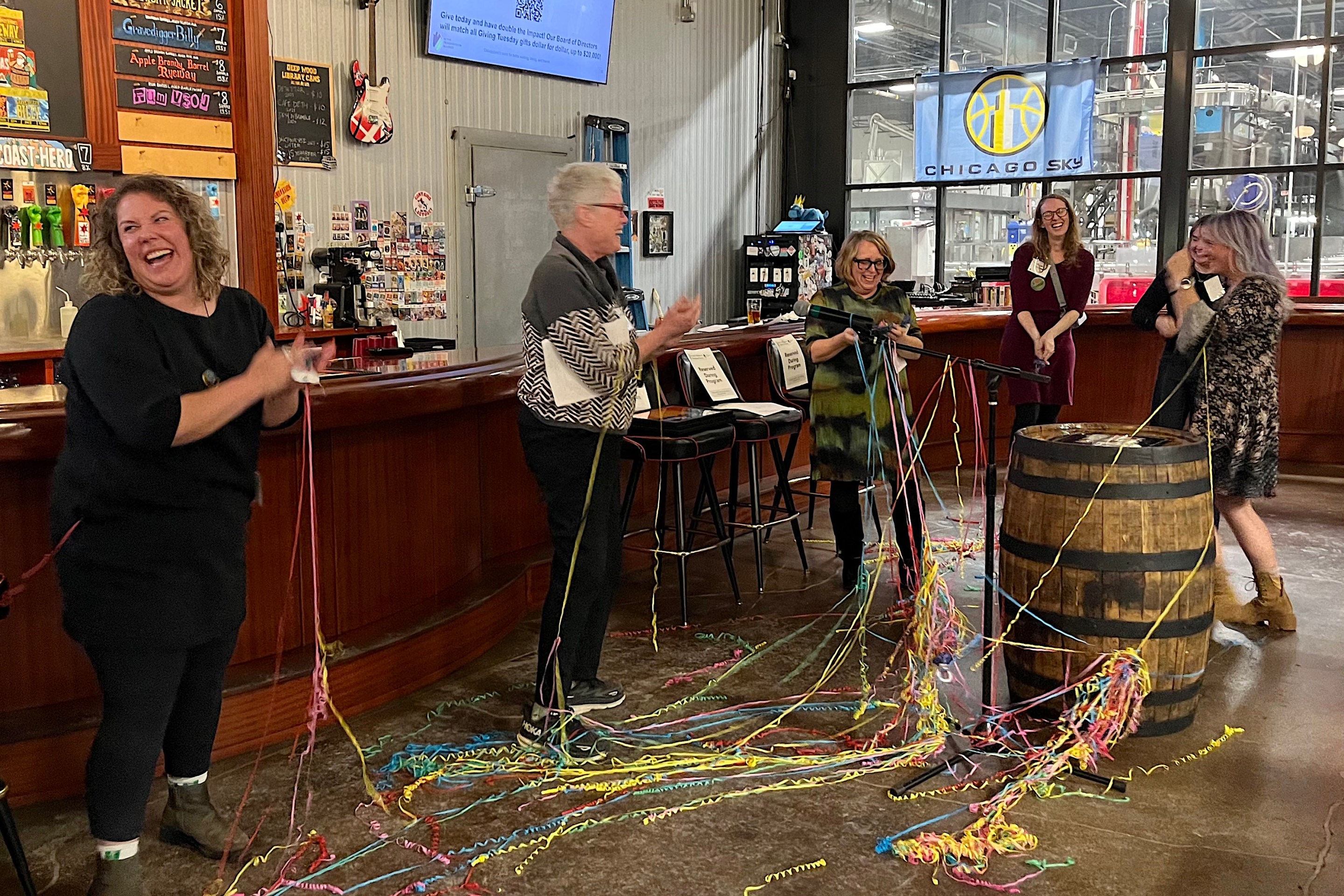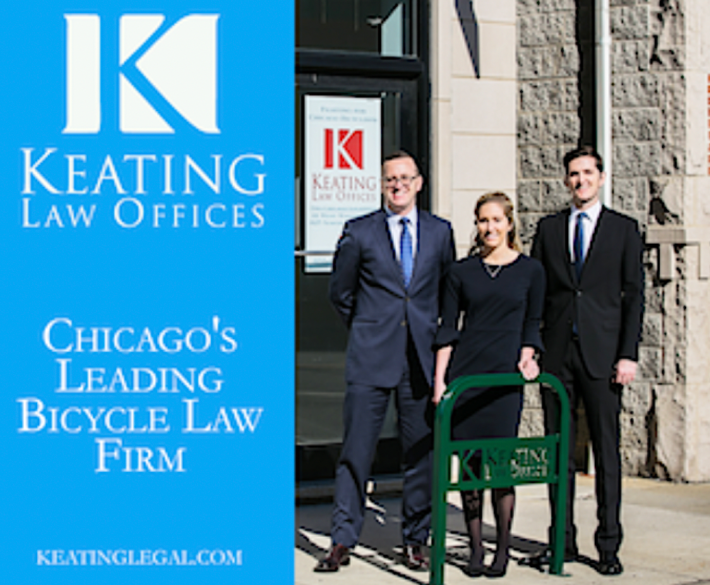
Back in January, A City That Works writer and Streetsblog Chicago contributor Richard S. Day discussed the benefits of a potential land use plan for Broadway in Uptown and Edgewater on this site. Harnessing the potential of the Red and Purple Modernization project, he wrote, the upzoning proposal would allow for more density and walkability on the 2.6 mile segment of Broadway between Devon and Montrose avenues.
The discussion of the idea was led by local alderpersons Angela Clay (46th), Matt Martin (47th), and Leni Manaa-Hoppenworth (48th), and the Chicago Department of Planning and Development. This included a couple of public hearings on the proposal in late 2024.
"There are a bunch of reasons to be excited about this project," Richard wrote in January. "By adding pedestrian street designations to parts of Broadway that don’t yet have them, the city would enhance walkability and prohibit new curb cuts for car-centric land uses like strip malls, drive-throughs, and car washes. But the biggest change would be the upzoning, which would could result in more affordable housing options, increased transit ridership, more customers for local businesses, and more tax revenue for the City." Sounded like a win-win-win-win, right?
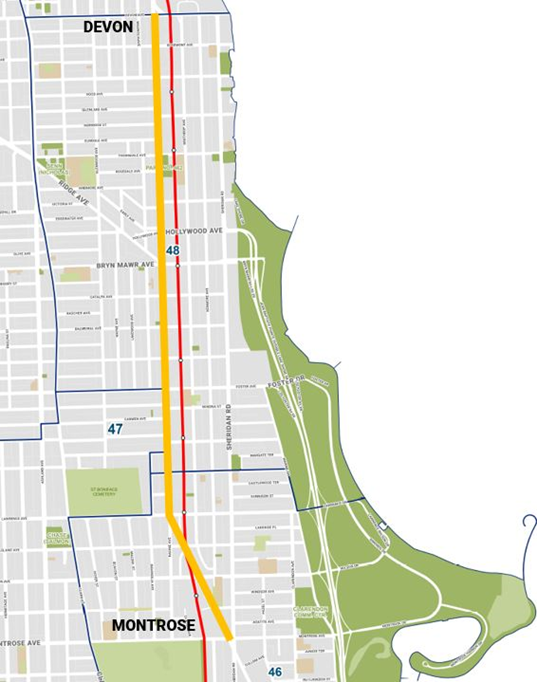
A lot has happened with the proposal since then, and it's looking increasing likely this forward-thinking vision is going to become a reality. Block Club Chicago's Madison Savedra provided an update on Tuesday. She reported that all three local alders are introducing legislation for the zoning changes in their respective wards at Wednesday's City Council meeting. Next month the Committee on Zoning, Landmarks and Building Standards will likely vote on them. If the upzoning pitch clears that hurdle, the full Council will make the final decision.
Savedra wrote that if the ordinances pass, the zoning on most of Broadway between Winona Street and Montrose in Uptown would be C1-5. This allows for developments of up to 80 feet, typically five to seven stories high.
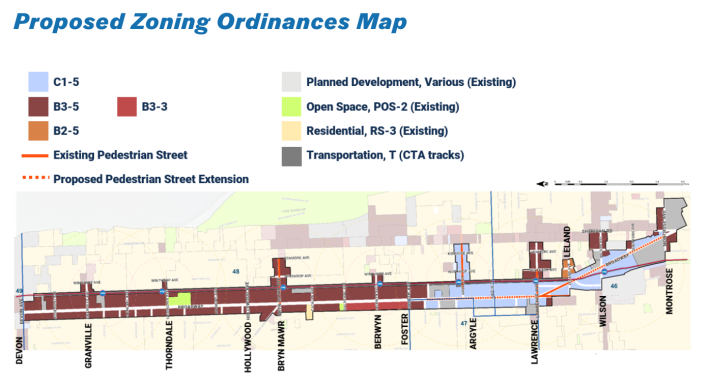
The upzoning proposal originally called for much the rest of the corridor to get the B3-5 zoning designation, which also allows 80-foot-high buildings. Streetsblog Chicago' cofounder Steven Vance, who also runs the development data site Chicago Cityscape, previously calculated that about 18,000 new housing units would have been permitted on Broadway under the original plans for the zoning remix.
Block Club reported that the majority of Broadway from Devon to Foster would still become B3-5. But Ald. Manaa-Hoppenworth said that due to input from local residents, and large lot sizes, the plan was changed to B3-3 zoning on the west side of Broadway between Balmoral and Foster (red section on the above map). As it stands, these parcels are largely covered with parking lots. B3-3 allows ten feel less height than B3-5, at only 70 feet, so there would be fewer units.
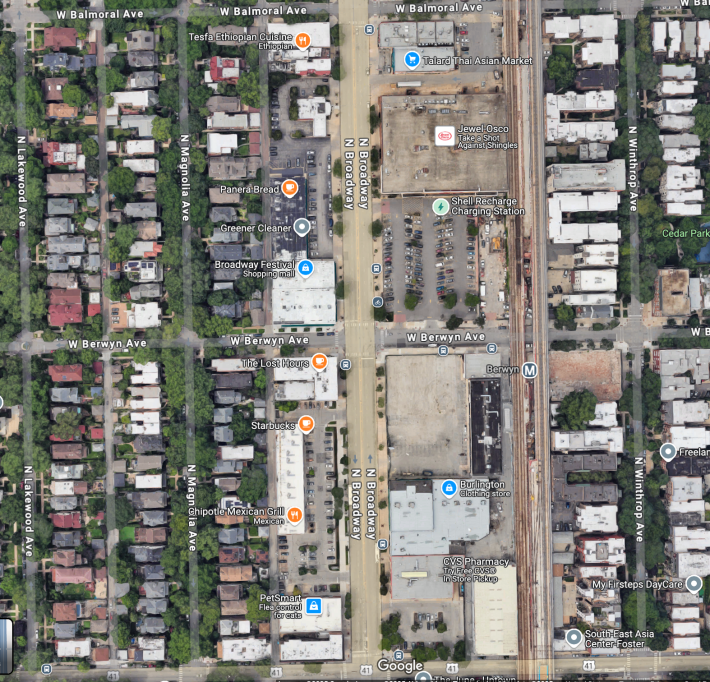
According to Savedra, plenty of Edgewater locals testified at a February Chicago Plan Commission meeting that they supported the proposal because it would make it more affordable to live near transit. And 46th Ward Director of Development and Infrastructure Jesse Orr told her that over 75 percent of feedback the office got via calls, emails, and surveys was in favor of the zoning change.
Chicago's Affordable Requirements Ordinance requires that every development that constructs or adds 10 or more units on a property include affordable units. 20 percent of the new homes must be rented or sold at rates designated as affordable. That basically ensures that the units are within the budget of middle-class Chicagoans, not just relatively affluent folks.
But not everyone is happy about the prospect of Uptown and Edgewater becoming denser and more affordable, and opponents been making plenty of noise about the issue. Typical of them is Patricia Sharkey, President of ENN-NEON Block Club, which represents two enclaves in northern Edgewater.
Sharkey published the op-ed "Ald. Manaa-Hoppenworth faces crucial
decision on Broadway upzoning" last month in the the News-Star neighborhood newspaper. That's the Far North Side edition put out by the local Inside Publications chain. As Streetsblog Chicago readers know, as the producer of copious "Not In My Back Yard"-style coverage, Inside Publications is basically of the anti-SBC. They have a long record of opposing affordable transit-oriented development, Neighborhood Greenway bike-pedestrian routes, and protected bike lanes.

Publisher Ronald Roenigk, known for running his own articles under fake names, seems to be proud of his reputation for opposing anything new in Chicago neighborhoods. His office is located in Edgewater. In a recent email exchange, which he gave me permission to quote (I'll leave out his saltier word choices), he referred to himself as the "King of Nimbyland." "My friends all call me that now before they bow down before me," he joked. "So I added it to my business card. Best nickname ever!"
"Haha!" I responded. "Although I would argue that the average Edgewater denizen isn’t a NIMBY. You folks are just a vocal minority, unfortunately with newsprint access."
But let's not assume that Sharkey's attitude towards allowing the construction of more affordable housing on Broadway is narrow-minded, just because her op-ed ran in a paper that usually is. Instead, we'll let her words about the proposal speak for themselves.
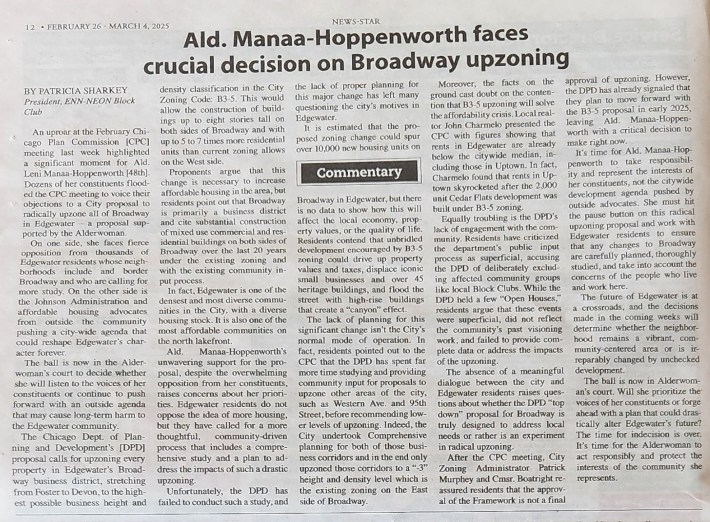
"[Ald. Manaa-Hoppenworth] faces fierce opposition from thousands of Edgewater residents whose neighborhoods include and border Broadway and who are calling for more study." That's an interesting statement, because the entire Edgewater community area only contains about 56,000 residents. Does she actually have evidence that such a large percentage of them are dead-set against the plan?
As far as the supposed need for more study of the proposal, there have already been somewhere around half a dozen meetings, a survey, and prior work and engagement by Edgewater Chamber of Commerce and Uptown United. This "not enough input" argument is a common anti-development tactic. Folks who don't want something built have an easier time objecting to the process than the outcome.
"On the other side is the [Mayor Brandon] Johnson administration and affordable housing advocates from outside the community pushing a citywide agenda that could reshape Edgewater’s character forever. The ball is now in the alderwoman’s court to decide whether she will listen to the voices of her constituents or continue to push forward with an outside agenda that may cause long-term harm to the Edgewater community."
Darn those outside agitators, trying to make it easier for new people to move into the neighborhood!

"Ald. Manaa-Hoppenworth’s unwavering support for the proposal, despite the overwhelming opposition from her constituents, raises concerns about her priorities." Overwhelming opposition? That's not what what Block Club, generally an unbiased source for local real estate news, reported.
"It’s time for Ald. Manaa-Hoppenworth to take responsibility and represent the interests of her constituents, not the citywide development agenda pushed by outside advocates," Sharkey reiterated at the end of her op-ed. Is that a Not In My Back Yard attitude? I'll let you decide.
Update 4/16/25, 11:30 AM: After this article was published, 48th Ward Chief of Staff Nicole Granacki contacted Streetsblog in response to Sharkey's claim that there is "overwhelming opposition from [Ald. Manaa-Hoppenworth's] constituents" to upzoning.
"I want to share that we have published all of the feedback from the community about Broadway, and it's clear that the community is in support," Granacki. "We put all this on our blog. Anyone can read the comments and see that most of the 1,600 neighbors that provided comments are in support, and that of the 447 pages of written comment submitted to Plan Commission, there were 299 pages of support and 148 pages of concern."
Thanks to Streetsblog Chicago real estate whizzes Richard Day and Steven Vance for input on this piece.

Did you appreciate this post? Streetsblog Chicago is currently fundraising to help cover our 2025-26 budget. If you appreciate our reporting and advocacy on local sustainable transportation issues, please consider making a tax-deductible donation here. Thank you!
